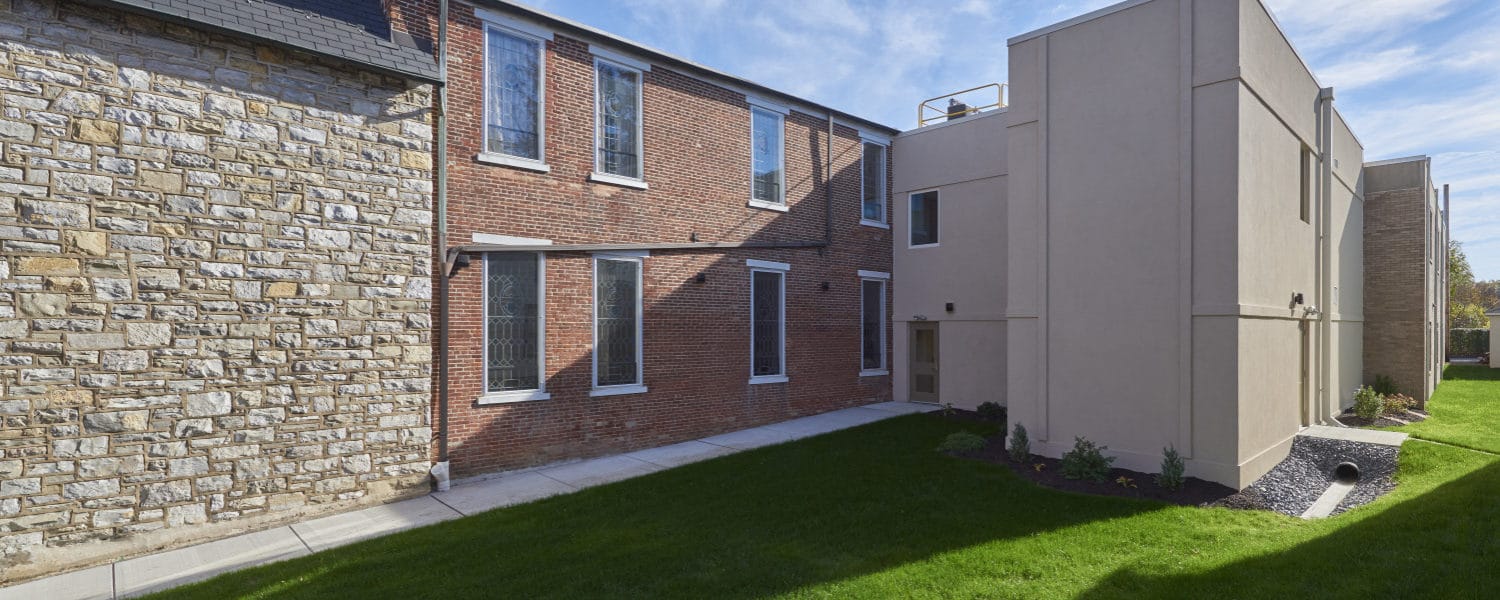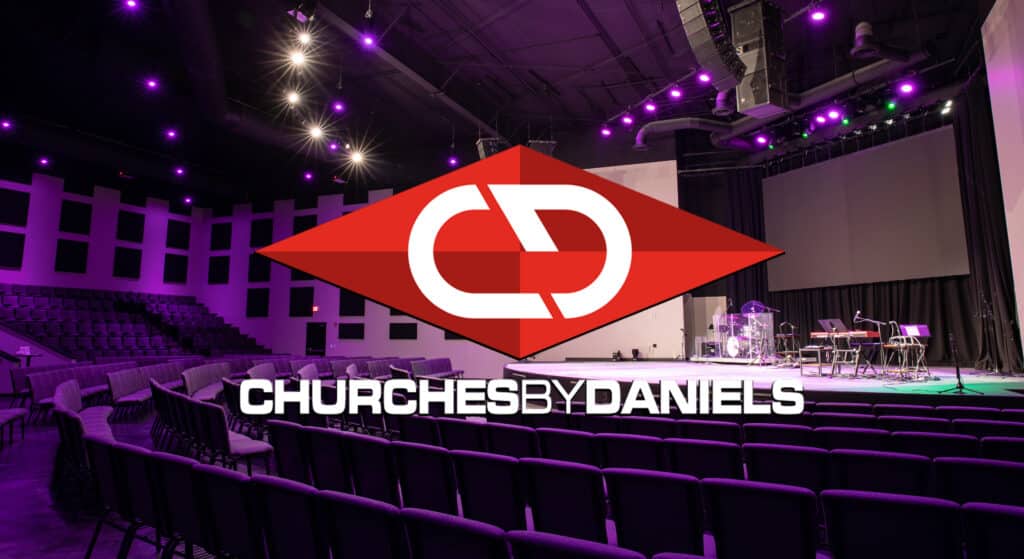The beautiful Trinity Evangelical Congregational Church in Lititz, Pennsylvania, built in 1874, is a historic gem. Since that time, two additions have been made to the church to accommodate growth—one in 1936 and the second in 1970.
As the congregation grew and the church’s needs continued to expand, it again became time to address some necessary improvements. When approaching a potentially complex project in an older building, identifying hidden conditions is crucial.
The relationship between Trinity EC Church and Horst Construction is not new. Back in 2010, Horst made improvements to the exterior of the building: evaluated the masonry and pre-cast stone; installed, repointed, cleaned and sealed the selected pre-cast stone; placed faux slate on the roof and pre-cast stone on the exterior; restored—cleaned, re-leaded, and repaired—the stained glass windows; and installed new insulated storm windows with proper venting.
In September 2016, Horst Construction was proud to complete Phase 1 of the Trinity Evangelical Congregational Church’s Master Plan. Much of the conversation for this phase involved addressing the needs of both an aging membership and new families with more diverse interests. The new elevator enables access to classrooms, the fellowship hall, sanctuary, handicap bathrooms, and other bathrooms on all three floors. Major renovations to the kitchen, fellowship hall, and narthex, as well as relocation of the existing HVAC condensers to the roof of the new addition, were also included in this phase.
Addressing Major Changes
When approaching a potentially complex project in an older building, identifying hidden conditions is crucial. The process was more complicated than usual for Horst and its partners, since drawings for Trinity were only available for the 1970s addition, not the earlier structures.
One of the major challenges of this project was developing a strategy to accommodate current and future project needs while keeping costs under control. The original elevator expansion plan required working around the parsonage house on the adjacent lot, which would have required significant shoring costs of approximately $70,000. Since that house would need to be demolished for future phases of work anyway, the Horst team suggested demolishing the house as part of Phase 1. By addressing this challenge immediately the church saved $40,000, which also helped everyone more easily envision the future addition.
Connecting the addition to the existing basement required complex and creative solutions. The 1874 basement walls were adjacent to the footprint of the new addition and could be compromised by the weight of the new structure. The Horst team had to excavate 8 feet below the bottom of the stone foundation and pour an underpin support wall. In antiquity, the church property was a brickyard, and as a result there were unsuitable soils to manage.
The soil bearing was only 2,000 pounds per square foot, which further tested the design team; therefore, Horst had to install extra wide footers—5-7 feet wide—to spread out the load. These challenges required a specialty contractor in foundation work, as well as the efforts of a structural engineer, geotechnical engineer, and specialty engineer.
One area of expansion involved breaking through some of the masonry walls of the original 1874 structure. Since the structural requirements of that time were not nearly as stringent as those today, the team used mini-excavator equipment inside the dirt crawlspace to provide access to the wall that required stabilization. Horst also had to add underpinning to create elevator access to the fellowship hall, a problem many older churches share.
According to Roger Josephian, project manager, “When undergoing a renovation, most churches are interested in a more updated, low maintenance kitchen. Warming kitchens are less challenging, but Trinity needed to update its commercial kitchen. As we often see, the range hood was very old, undersized, and not code compliant. We installed a new, larger hood with heat sensing on/off controls, heated make-up air, and a fire suppression system. Kitchens also need to be easily maintained. We installed a sheet vinyl flooring with welded seams, a great budget friendly alternative to a new tile floor that’s easy to clean. In addition, the utilities are likely maxed out and unable to support the renovation, or may not be code compliant to begin with. Often you need to add an entirely new electrical service to support the kitchen, air conditioning, and other improvements—and in this case an elevator.”
Incorporating ADA Requirements
“We also had quite a few additions regarding fire code compliance,” added Roger, “Since there was no egress from the basement to the exterior, we had to build a fire-rated stair tower, as well as an ‘area of rescue’ to accommodate a wheelchair, along with an intercom system to call for help in the event of an emergency. Originally, we called for push/pull hardware on the doors; however, we had to use latching hardware because the hallway was now an exit path in case of fire. The bathrooms are all ADA-compliant too. Previously there were no handicap bathrooms—and now there are five within the building.”
While there are additional improvements yet to come, the team at Horst has been energized by this collaborative process. In developing a stellar team for this extremely complex project and working to reach an understanding of the church’s needs, Horst was able to provide Trinity with proactive solutions that will serve their congregation for many years to come.
Horst Construction, a fifth-generation family owned construction company, has been building strong client relationships for over 120 years, www.horstconstruction.com.









